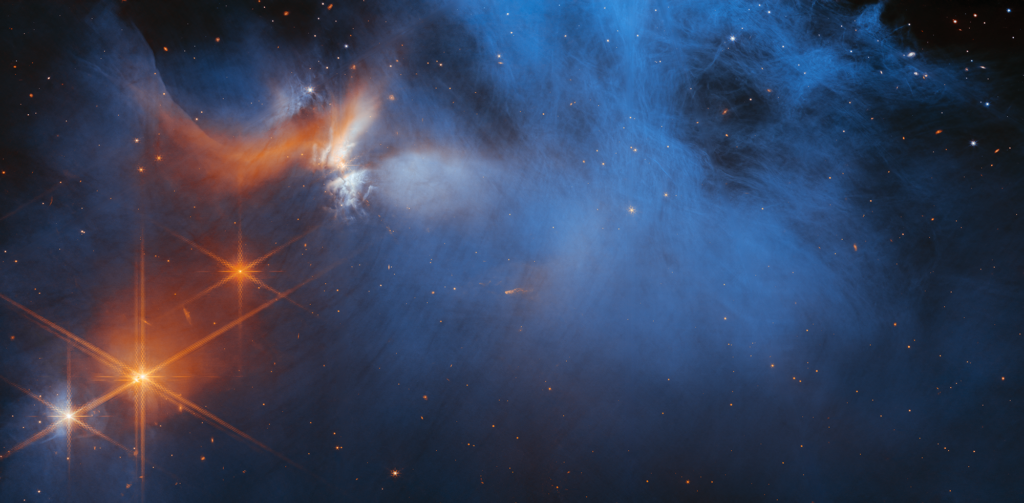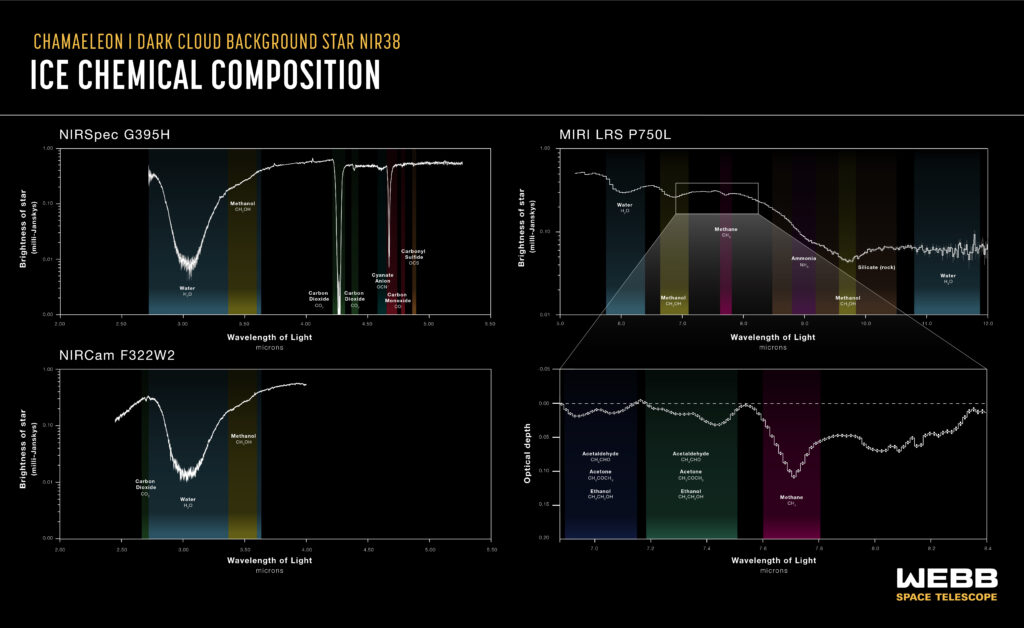Using the James Webb Space Telescope (JWST), astronomers investigated the Chamaeleon I molecular cloud, discovering many different types of ice inside it. This discovery is an important step towards understanding how complex compounds form, which become the building blocks for future exoplanets.
Chamaeleon I molecular cloud
Chameleon I is part of a larger complex, which is one of the regions of active star formation closest to us. It is located at a distance of 630 light-years from Earth. The cloud is relatively isolated from other star-forming regions. According to astronomers, there are about 200 – 300 stars in it. In the distant past, our Sun could form in one of these clouds.

Basis of future exoplanets
An international team of researchers used the JWST telescope to look inside Chameleon I. They were interested in ice. They are important participants in the formation of exoplanets, since they are the main carriers of five key light elements (carbon, hydrogen, oxygen, nitrogen and sulfur), which can be part of planetary atmospheres, as well as molecules of sugars, alcohol and simple amino acids.

During the observations, JWST identified many different types of ice inside Chameleon I: from the usual water ice to frozen molecules of carbon dioxide, ammonia, methane and methanol (methyl alcohol), which is the simplest form of complex organic matter.
In addition, scientists have found traces of signatures of organic molecules more complex than methanol. So far, astrophysicists have not been able to determine exactly what these compounds are. But the discovery clearly indicates that relatively complex prebiotic organic molecules are formed in clouds of dust and gas even before the birth of stars.
It was also worth noting that thanks to JWST, researchers could estimate for the first time the amount of sulfur contained in icy pre-stellar dust particles. It was more than previously observed, but less than the total amount that was expected to be found in Chameleon I, based on its density. This is also true for other key elements.
Now scientists are trying to figure out exactly where the missing elements are “hiding”: in ice, soot-like materials or rocks. Their number in each type of material determines how many of them enter the atmosphere of an exoplanet, and how many — into their interior. In turn, it depends on which path the formation of the extrasolar world will take and how suitable it will be for the appearance of life.
Earlier we talked about the fact that toxic gases could become indicators of life on an exoplanet.
According to https://www.nasa.gov
Follow us on Twitter to get the most interesting space news in time
https://twitter.com/ust_magazine

